Living in the shadow of rebellion: India’s Gond tribe
Members of Central India’s Gond tribe find themselves caught in a decades-long conflict between armed Maoists and the police.
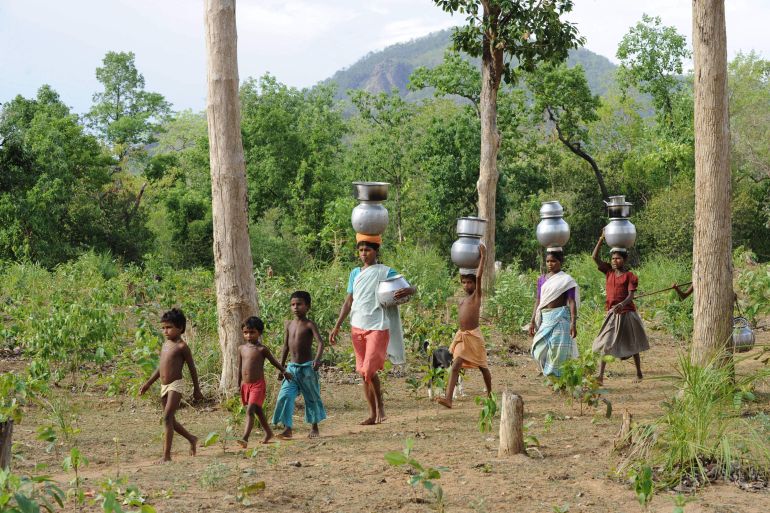
Reena* was a teenager when she became inspired by the speeches of a Maoist leader who lived in her small hamlet in Abujmad, located in the Narayanpur district of the central Indian state of Chhattisgarh.
It was the late 1990s and the leader spoke of equality and women’s rights.
Keep reading
list of 4 itemsHow a retired Indian professor took on a mining giant – and won
The forest-builders of India’s Shivaliks
The monkey hunters: The story of Goa’s Vanarmare tribe
A new pride in being Gondi – one of the largest Indigenous groups in India – consumed her as she listened to rousing speeches about how the Gond tribe were equal to other cultures; not inferior to them as she had come to believe during her school days.
The Naxalite-Maoist movement, which was sweeping across the region at the time and which remains a strong force today, gave her a sense of purpose and identity.
Reena had seen what she believed was the slow annihilation of her culture, along with the Gond belief system of Koya Punem. Until then, she had been ignorant of the strength and symbols of her people – Jal, Jangal, Jameen (water, forest, land).
“Since childhood, I was not conscious of our tribal identity,” says Reena. “l studied in a school where we learned about the Hindu religion and Hindu way of life. We had begun feeling that the practices of our own religion were not relevant any more. There was also a belief that tribal culture is that of ‘demons’ and, therefore, inferior.”
She became a part of the Maoist group in 1999, at the age of 14. She lived with her comrades, moving around different villages in the forests of the Bastar region for another 14 years, sharing the food that local communities could offer.
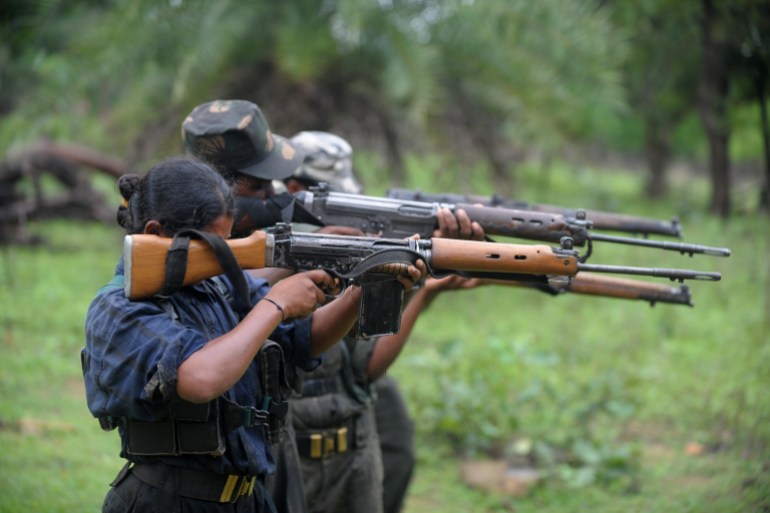
Caught in the crossfire
The Naxalite-Maoist movement has its roots in Naxalbari in the eastern state of West Bengal. In the mid-1960s, poor peasants and landless farmers in Naxalbari had begun revolting against the rich, exploitative landowners in the region. In more recent years, the movement has found support in the Communist Party of India (Maoist), which was founded in 2004 via the merger of the Communist Party of India (Marxist-Leninist) People’s War (People’s War Group) and the Maoist Communist Centre of India (MCCI).
Although the uprisings at Naxalbari in the 1960s were ultimately put down, the movement spread across several federal states, including Chhattisgarh, as the struggle against what they saw as the government’s “anti-poor” policies – such as allocating mineral-rich areas to corporate organisations for development without consulting the people living in those regions – continued.
The Maoists began to spread their ideology in the district of Bastar in Chhattisgarh in 1982. Bastar remained one of the fiercest battlegrounds between the cadres and government forces for many years.
According to the home ministry’s annual report for 2018-2019, some 3,749 people have been killed in 10,660 incidents of Maoist violence across 10 Indian states since 2010. Chhattisgarh reported the highest number of casualties, with 1,370 people dead in 3,769 violent incidents.
In 2005, the Chhattisgarh government created the Salwa Judum (Gondi words meaning “Peace March”) by mobilising members of local tribes as fighters against the Maoists.
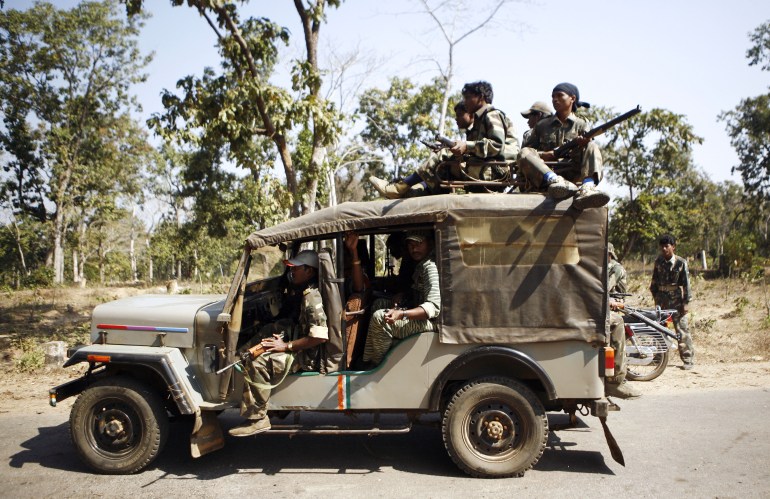
These fighters were trained by the state government in armed struggle and provided with weapons. They would vandalise the homes and shops of suspected Maoist supporters, while Maoists would kill those they suspected of being government informers.
The Salwa Judum movement, though, drew criticism from human rights observers as people found themselves caught in the crossfire between the two sides.
The numbers of casualties as a result of the struggle are sketchy. In 2008, the Indian Express reported: “Since the launch of Salwa Judum in June 2005, more than 800 people, including some 300 security personnel, have been killed by Naxalites. Special Police Officer (SPO) deaths alone total 98 – one in 2005; 29 in 2006; 66 in 2007; and two, so far, this year. There are 23 Salwa Judum camps in Bijapur and Dantewara [Dantewada] districts of Bastar region where almost 50,000 tribals from over 600 villages have been settled.”
One of the fallouts was the mass displacement of an estimated 50,000 tribe members from Chhattisgarh to neighbouring states. Eventually, the countermovement was disbanded in 2011 on the orders of India’s Supreme Court.
Reena describes how, against this background during her childhood, the Maoist leaders would stay with people in their villages, where they would discuss issues such as education, healthcare, the price of Tendu leaves (a type of ebony tree), and politics through casual interactions as well as at village meetings.
They encouraged people to raise their voices against all kinds of oppression, such as the displacement of tribe members because of mining, the perceived apathy of the government towards water contamination by red oxide from mining, and the leasing of tribal lands and forests to corporations. The cadre members also provided informal education and basic healthcare, which the government was perceived as failing to provide.
The ones who come from the green mountains
There are estimated to be more than 14 million Gondi people in India. They call themselves “Koitur”, or “the ones who come from the green mountains”. “Gond” and “Koitur” or “Koya” are used interchangeably.
Their traditional homeland, known as Gondwana, spreads across the states of Madhya Pradesh, Chhattisgarh, and parts of Maharashtra and Odisha. They refer to themselves by different names, such as Raj-Gonds, Madia-Gonds, Khatola-Gonds and Koyas, depending on where the tribes are located, although these names are, in fact, not strictly state-specific. The Gondi language is said to be derived from the Dravidian language group, a family of some 70 languages spoken mainly in the south of India. However, these people are believed to be genetically Proto-Australoids – related to Australian Aboriginal people.
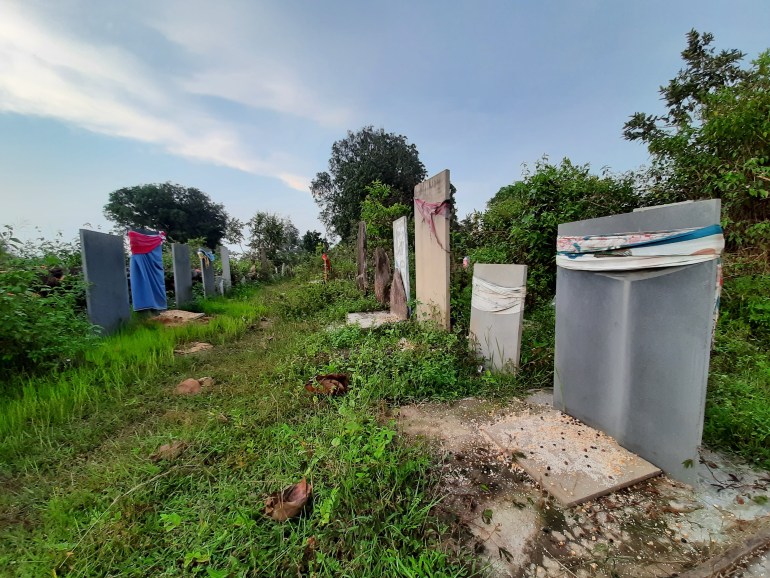
The Raj-Gonds ruled over some parts of the state of Madhya Pradesh in the 14th century until they fell to the Marathas from western India. Medieval texts mention the rise of Gond kingdoms in Madhya Pradesh, Chhattisgarh and parts of Maharashtra and Odisha. Despite the eventual fall of the Gond kingdoms, many Gondis in the interior region remained free of the influence of new rulers. With time, however, Hinduism and modernism have had a significant influence on their culture and religious practices.
Traditional attire – usually pieces of cloth worn above the knee, together with silver and brass jewellery – is now worn only by those living deep in the forests. In the towns, and among the educated and those who are more economically comfortable, it would be difficult to identify a Gondi just by looking at their clothes. Tattoos, however, still form part of the Gondi identity. They are usually done at specific stages of life, such as coming of age, marriage or having a baby, and are believed to keep people safe from evil forces.
The Gondi people follow a pantheistic religion and their supreme deity is Parsapen, the child of supreme beings Salla and Gandra. Gondi legend has it that when Parsapen was born, so were the Gondi people, along with the universe. Each of the 750 Gond clans has its own deities, to whom shrines are built inside homes.
In the Gond religion, there is no concept of heaven and hell, but a belief that dying people join their ancestors’ spirits. Outside each village is a sacred ground where memorials to the dead are erected. Offerings of food, maize and grains are made at these memorial sites to appease the spirits of the dead.
Roaming jungles, drinking from streams
Through her experience of living with the poorest of her tribe in the deep forests of Bastar, after she joined the Naxalite movement, Reena says she learned how illiterate people there were being exploited by traders who bought Tendu leaves at throwaway prices and sold them on at outside markets for huge profits.
She also saw how healthcare and basic amenities were absent in these villages even though their land had been taken over by the government for mining and industrial purposes. Rivers in many areas had become polluted because of the iron ore draining out of mines into the streams, causing malnutrition and a lack of drinking water sources.
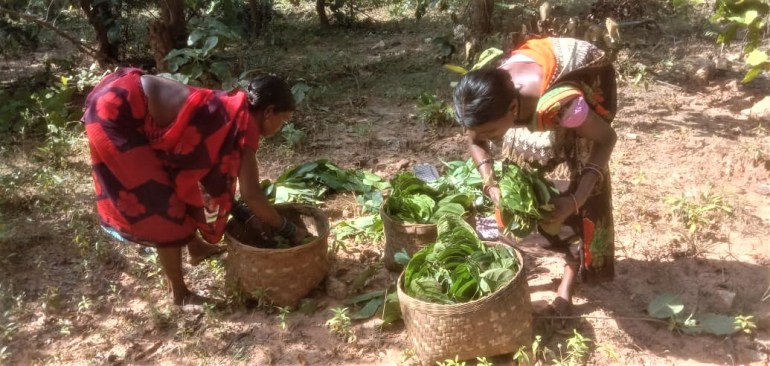
For 14 years, Reena says, she roamed the jungles of Bastar, densely inhabited by tropical trees. She drank water from the streams flowing from the Abujhmar Hills and plucked fruit from trees on her way to visit remote villages in the hinterlands where people lacked basic amenities and where it was hard for the police to reach them.
“It was roaming around in these villages that I learned the Gondi language,” Reena says. While she had grown up understanding the Gondi language, she says, most people in her childhood village spoke Chhattisgarhi (similar to India’s official language Hindi) and Halbi (similar to Oriya, spoken in the eastern Odisha state).
The village she grew up in was closer to the main towns of the region and had integrated with the majority population, adopting their religious and cultural practices. This was not the case with the villages she visited further afield, however, where only the Gondi language was spoken. “People there defended the Gond identity more fiercely.
“They understood no other language and no other gods than their hills.”
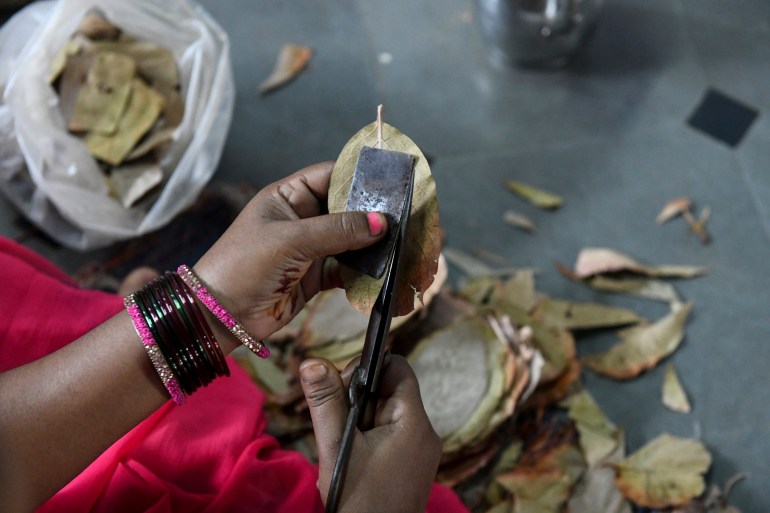
Reena lived in the Gondi villages inside the forests until 2014 when she started to show symptoms of heart disease. Otherwise healthy, she found herself experiencing difficulties on hill treks or walking long distances. Rejoining mainstream society meant surrendering to the police in exchange for not being prosecuted as an “insurgent”, something she and a friend did together with the mediated assistance of a human rights organisation. Charges of “insurgency” were dropped and Reena was allowed to be examined by a doctor.
The day before she surrendered to the authorities, she says, she “twisted and turned” in her thatched bed and stared at the darkness outside of her window.
“Leaving the movement was one of the toughest decisions of my life,” she says at her upper-middle-class home in New Delhi, where she now works and lives. “But I had to take it for my own wellbeing.”
She was found to have a hole in her heart and received treatment and, for the first time in years, returned to her childhood village last year. Now, aged 32, she lives with her partner in New Delhi. After several years of struggling to find a job – not easy for someone labelled as a rebel in police records – she has settled down.
Stories abound in the region of people being coerced into joining the Maoist movement, but Reena does not believe this is the case. She says no one is forced to join but acknowledges that many people are caught in the fighting between the armed movement and the Indian authorities.
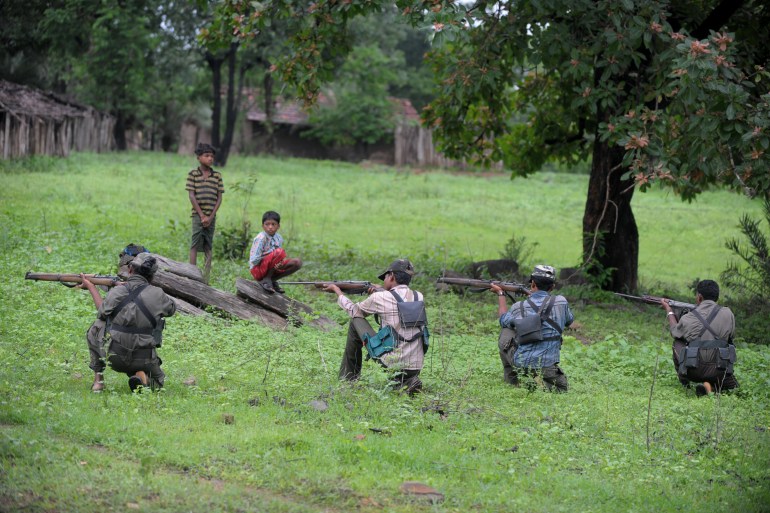
The police in the Bastar region confirm that Naxalite cadres – or Naxalites, as members of the Maoist outfit are often called – can “surrender” to the authorities in the way Reena describes.
Bastar’s Inspector General Sundarraj Pattilingam told Al Jazeera: “Disenchanted local cadres have started to shun violence and have decided to join the national mainstream. Rehabilitation policy of the government provides economic assistance and other facilities for those surrendered Maoist cadres, who want to lead a normal, peaceful life. So far in the last five years, more than 2,458 Maoist cadres have surrendered.
“After observing the activities of these surrendered cadres for a reasonable time period, their criminal charges against them are withdrawn by adopting due legal procedures. A few of the surrendered cadres have joined the police and have immensely contributed to the anti-Naxalite operations being conducted against the left-wing extremists.”
Caught between two sides in a war
Back in the armed uprising-hit Bastar region, tribal rights activist Soni Sori, 45, is trying to get on with her life as a mother to three children, as well as continue her work as a human rights activist and advocate in Dantewada district, where there is a tense standoff between the Naxalite-Maoist movement and security forces including the state police and the Central Reserve Police Force (CRPF).
Her work as an activist involves helping Indigenous people reclaim the land they say has been stolen from them by the authorities, as well as fight for social justice, particularly for women. Women here complain regularly of mistreatment by the police, including wrongful arrest, rape and even shootings, but there are no official figures showing the number of such incidents. Sori says she is often accused by the authorities of having Naxal links but denies being involved with the group.
Her interests lie in women’s rights and saving forests and hills – the home of her tribe’s gods – from capitalism and a government which she sees as wanting to exploit the region’s rich mineral resources to support the country’s development. To this end, Sori and her friends organise peace marches and dharnas – peaceful, sit-in protests. They do not engage in violence, she says.
Despite this, she has been arrested many times and police officers are stationed outside her house.
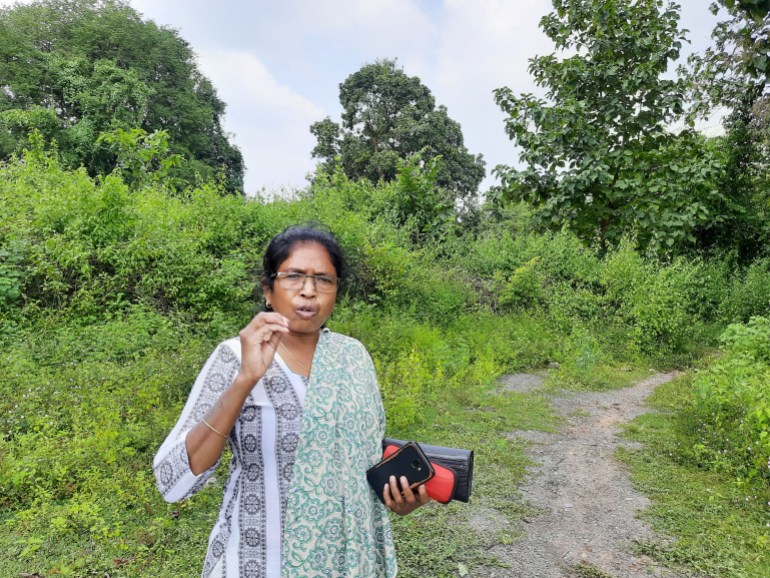
Inspector General Pattilingam confirmed to Al Jazeera that Sori is currently receiving “security cover”. He also said if Sori wants the security removed, she should submit a written application.
On the other side, Naxalites continue to seek her allegiance and support for their cause, which is often bloody. Sori says she does not believe in an armed struggle because it is the common woman and man who ends up suffering the most as a result. She says she does not feel “under pressure” to join, but Naxalites have tried to “influence” her by arguing that their struggles and the enemy are the same – the government.
However, she says, the people living in this region do feel conflicted about the troubles between rebels and police forces. While they see the injustice people here suffer because of government policy and actions, they can also be harmed by Naxalites.
Her own life has been torn apart by the fighting between rebels and the authorities.
“In 2011, my father was shot at by Naxalites. He never supported Naxalites, never attended meetings – he opposed them,” she says. As the head of his village, he refused to allow armed Maoists to stay there. “Naxalites burned our home, car, jewellery, everything.”
Sori was visiting friends about 30km (19 miles) away when she received the news about her father’s shooting. For several hours, she could not return to be with him out of fear that the Naxalites might be waiting for her on the way. When she finally reached her father, he was still lying on the ground outside the family home where he had been shot. People nearby were too afraid to help him, so he lay there, wounded, for hours before Sori reached him. Thankfully, he survived.
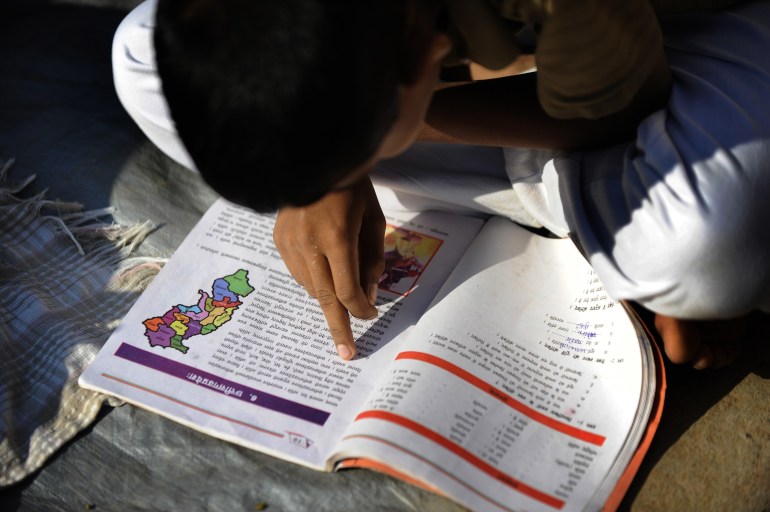
Sori, a former government school teacher, has herself had her fair share of brushes with the law. In the same year that her father was shot by Naxalites, she was arrested on charges of being a conduit for the group.
She alleges that she was sexually and mentally tortured in captivity. “They would strip me naked and make fun of my private parts. The police also shoved pebbles in my private parts. I am still living with the pain and discomfort of the torture,” she says.
Her arrest gained national attention after a letter to then-Prime Minister Manmohan Singh on her behalf from Human Rights Watch in New Delhi became public. The charges against her were dropped in 2013 but she lost her job as a government school teacher following her arrest and has not been able to work again because of the case.
‘Where is your God?’
Sori has continued to protest peacefully on behalf of the Gond people, regardless. In 2019, for example, she joined hundreds of tribal people, mostly from the Gond tribe, who had gathered at Bailadila in Dantewada district to protest against the granting of a mining lease. The site on which the mining was proposed was on the Nandraj Hill, considered sacred by the Gondi tribe.
The Nandraj Hill, on the iron-ore-rich Bailadila range, is dedicated to Pitod Devi, wife of nature god Nandraj. The locals believe the family of Nandraj resides in the hills and protects them from the “furies” of nature.
“Where is your God? There is no temple there or statues to represent your Gods,” Sori recalls the government officials saying during the dispute.
“We don’t have temples,” she explains. “In our culture, the hill itself is holy ground. They [government and corporate representatives] could not understand the concept.

“Once, I suggested to the locals in some of the villages near the hills that we construct a boundary wall or a structure that would endorse the fact that our Gods live there. But people rejected it asking: ‘Do we have boundary walls in our homes? How can we restrict the existence of our God? Don’t ever think about it. Our Gods are free, just as we are, under the open skies. Our tribals are ready to die to protect the land of our Gods. These Gods keep our tribe safe.’”
It is disputes like these, say human rights activists, as well as the fact that once an industry is built, the locals do not benefit from it in terms of jobs or other facilities, that have driven many into the arms of the Maoist movement.
Bastar-based human rights lawyer and researcher Bela Bhatia says: “Every illegality that the government allows means that the family and the community of the deceased are going to lean towards the Maoists. There is no third side to this story. Failure on the part of the government to keep its constitutional promises leads the people to join the movement.”
This trend has left its mark on the Gond tribe generally. Sori, who now lives in the town of Geedam, explains how much of the traditional music and dance during festivals in her village 30km away have stopped for fear of attracting unwanted attention from the police force who might mistake them for Naxalite gatherings.
“We were very happy people and loved our songs and dances. Young people danced until the dawn during religious festivals and marriages but now it has all mellowed down. They [police] have finished our culture,” she says. “People now are so bogged down with fighting for justice for themselves and their kin that culture is now secondary to us.”
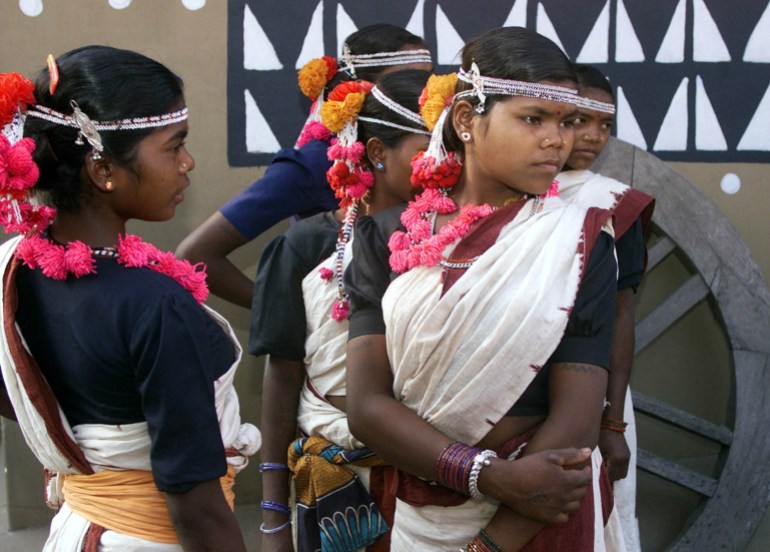
Victims of mistaken identity
A drive through the villages in Dantewada district bears out this sentiment. Almost every person here has a story to tell, either about police harassment or living under the shadow of the Naxalites.
Thirty-six-year-old Baman, who lives with his mother, wife and two children in Kirandul village in Dantewada, lost his brother a couple of years ago. He alleges that the police force shot his younger brother because they suspected that he was a Naxal supporter. Baman says it was a case of mistaken identity.
“He was just having lunch with us one day, when police officials dragged him out of his home and shot him in the fields. No trial, just shot dead,” Baman says. He is still seeking justice for his brother and helping people in similar situations to speak out and register complaints against such atrocities.
One family he is helping to find refuge in a neighbouring village lost their 26-year-old son because of a similar case of mistaken identity. “He had just gone to pluck Mahua flowers in the morning when police personnel, stationed in the camps in our village in Gampur [in the neighbouring Bijapur district], shot him,” says Madko Madvi, Badru’s mother.
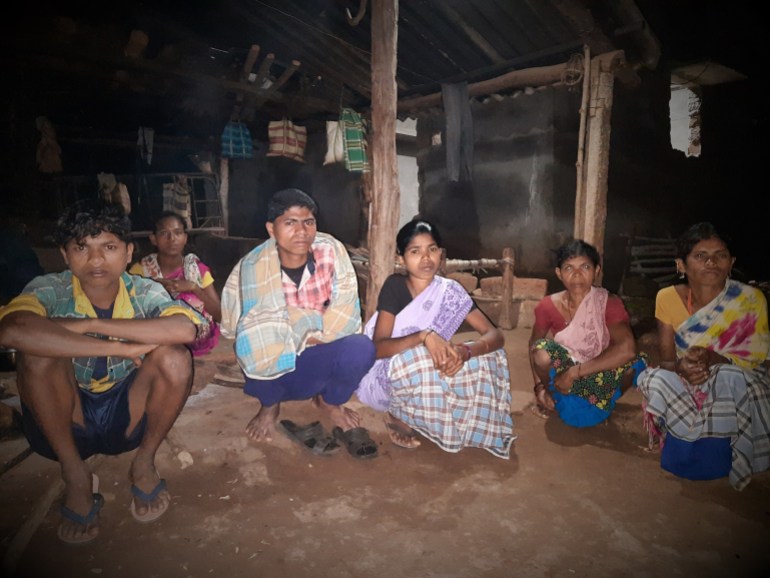
Badru was killed in March, just before the COVID-19 lockdown was imposed, but the family have not given him a proper burial as they say they will only do so when justice is served.
“We don’t want compensation, just justice for our son,” Madvi says. “I wish he had not stayed back home and instead had joined his wife for work [as a contract labourer] in Andhra Pradesh [a neighbouring state].”
Twenty-five-year-old Kowasi Kosa is another resident of Bijapur district who we met making a pit-stop on a journey into Dantewada. He says he has not seen his brother, who was arrested in December 2019, for nearly a year. He also believes it was a case of mistaken identity – claiming that the police confused his name with a wanted Naxalite in the area.
“We have government ID cards to prove [who we are]. My brother and the other person actually have different names, but the police just wouldn’t listen. During the lockdown months, I would walk 40km to 50km just to drop fresh clothes for my brother at the jail. No meeting, no conversation. We have hired a lawyer and are still waiting to be heard.”
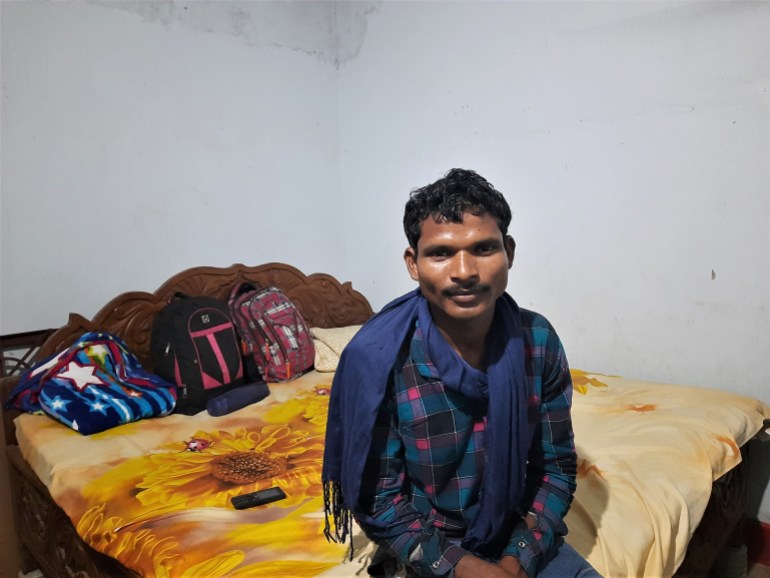
In response to these claims and many more like them, Inspector General Pattilingam, says: “Police and security forces deployed in Bastar don’t get involved in any extrajudicial activities. They perform their functions within the prescribed legal framework. There are lot of checks and balances like magisterial inquiry, Supreme Court guidelines, NHRC monitoring, with regard to any death due to police action. In order to boost the morale of their disenchanted cadres and malign the credibility of police forces, Maoist cadres and their sympathisers level false allegations against us.
“In the last 20 years, more than 1,400 of our brave soldiers have made the supreme sacrifice by attaining martyrdom in the line of duty. On countless occasions, security forces have proved our commitment to protect and serve the native population. We would continue to do so in order to make life better and peaceful for the native population of Bastar.”
Fighting a new battle
Thousands of kilometres away from this land of green mountains, Reena is fighting a different battle – the revival of her language and culture. She is still proud of her time as a Naxalite. To her, it wasn’t about violence but about empowering her tribe to fight against state “atrocities”. It was also the phase during which she felt and experienced the beauties of her tribe the closest. “I wouldn’t have had it any other way,” she says thoughtfully. Her slow, sing-song tone resembles the sound of the breeze on the Tendu leaves in her beloved Bastar. At 32, she is much mellowed but her beliefs are still intact.
“My father often told us a story about a king of Bastar. Whenever he would go to foreign countries, he would claim that he eats from plates of gold every day and throws them away. I asked him, ‘How?’ My father pointed at the plates made of leaves that we were eating from and said, ‘That is our gold and the gold plates that the king was talking about,’” says Sori.
Both Sori and Reena’s struggle is to safeguard the “golden plates” from which their people eat every day.
*Some names have been changed for anonymity
This story was produced in partnership with the Pulitzer Center.